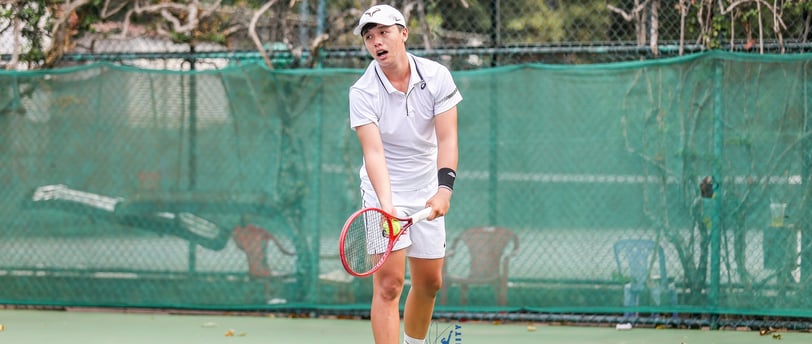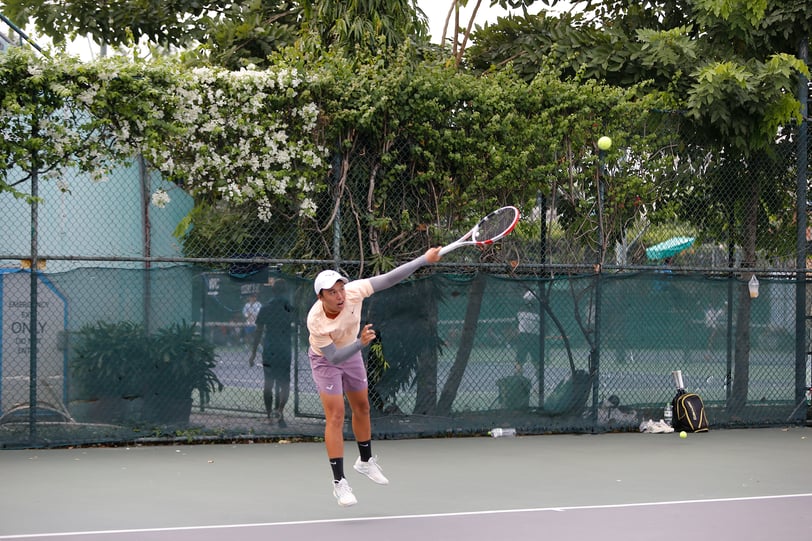Understanding the Different Types of Tennis Service and Choosing the Best Option
1/14/20244 min read


Tennis is a game of skill, strategy, and precision. One of the most crucial aspects of the game is the serve, as it sets the tone for the point and can often dictate the outcome of a match. In this article, we will analyze the various types of tennis service, discuss how to execute them, and explore which option may be the best choice for different situations.
1. The Flat Serve
The flat serve is the most common type of serve used in tennis. It involves hitting the ball with a flat racket face, generating pace and power. This serve is typically hit with a continental grip, where the base knuckle of the index finger is on the third bevel of the racket handle.
To execute a flat serve, start by standing with your feet shoulder-width apart and parallel to the baseline. Toss the ball slightly in front of you and to the right (for right-handed players) or left (for left-handed players). As the ball reaches its peak, explode upward and forward, making contact with the ball at the highest point possible. Follow through with your racket and aim for the desired target.
The flat serve is an excellent choice when you want to hit a powerful and aggressive shot that is difficult for your opponent to return. It is particularly effective on faster surfaces like grass or hard courts.
2. The Slice Serve
The slice serve is a versatile shot that can be used to create different angles and spin on the ball. It involves hitting the ball with a slicing motion, causing it to curve away from the opponent. This serve is typically hit with an eastern backhand grip, where the base knuckle of the index finger is on the third bevel of the racket handle.
To execute a slice serve, stand with your feet shoulder-width apart and slightly staggered. Toss the ball slightly behind and to the right (for right-handed players) or left (for left-handed players). As the ball reaches its peak, swing the racket from low to high and across your body, making contact with the ball on the outer side. Follow through with your racket and aim for the desired target.
The slice serve is an effective choice when you want to create a wide angle or force your opponent to reach for the ball. It can be particularly useful on slower surfaces like clay courts.
3. The Kick Serve
The kick serve, also known as the topspin serve, is a serve that generates significant topspin, causing the ball to bounce high and kick off the court. It is typically hit with a continental grip, similar to the flat serve.
To execute a kick serve, start with your feet shoulder-width apart and parallel to the baseline. Toss the ball slightly to the right (for right-handed players) or left (for left-handed players) and slightly behind you. As the ball reaches its peak, swing the racket from low to high and brush up the back of the ball, imparting topspin. Follow through with your racket and aim for the desired target.
The kick serve is an excellent choice when you want to disrupt your opponent's rhythm and force them to deal with a high bouncing ball. It is particularly effective on slower surfaces like clay courts.
4. The Power Serve
The power serve is a combination of speed and placement, aimed at overpowering the opponent. It can be executed with any of the above-mentioned serves, but with a greater emphasis on generating maximum pace.
To execute a power serve, use a continental grip and focus on generating as much racket head speed as possible. Explode upward and forward with your body, making contact with the ball at the highest point possible. Follow through with your racket and aim for the desired target.
The power serve is a great choice when you want to catch your opponent off guard or when you need a quick point. However, it is important to note that power alone is not enough; accuracy and placement are equally important to ensure the serve is effective.
Choosing the Best Serve for Different Situations
When it comes to choosing the best serve for different situations, several factors need to be considered, including court surface, opponent's strengths and weaknesses, and personal preference. Here are a few general guidelines:
- On fast surfaces like grass or hard courts, the flat serve is often the most effective choice, as it can generate pace and make it difficult for the opponent to react.
- On slower surfaces like clay courts, the slice serve and kick serve can be more effective, as they create different angles and bounce variations.
- If your opponent struggles with high bouncing balls, the kick serve can be a great weapon to disrupt their rhythm.
- When facing a strong returner, mixing up your serves and varying the pace, spin, and placement can keep them off balance and prevent them from anticipating your shots.
- Ultimately, personal preference and comfort with a particular serve should also be taken into account. If you feel confident and can execute a serve effectively, it may be the best choice for you.
Remember, practice and experimentation are key to improving your serve and finding the best option for your game. By understanding the different types of tennis service and considering the various factors involved, you can develop a well-rounded and effective serve that will give you an edge on the court.


